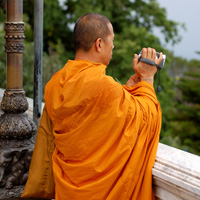Online Film School Free » Documentary Filmmaking Course » Documentary Filmmaking Tips
Documentary Filmmaking Tips



Documentary filmmaking is a long process and sometimes an exhausting one. You must be prepared for disappointments and for the process of learning from those disappointments. Since you don’t have a deadline to finish shootings, as oppose to fiction films, You can find yourself shooting for years and spending, even more, years on editing the film.
The important thing to know is that when you’ll do a documentary that will work, the benefits are great: You get to explore undiscovered sides of your life and to share your voice, which turns out to be the voice of many others.
I wanted to start this documentary filmmaking course with some tips to get you to start. The great thing about the documentary is that if you like this type of genre, you can start right away. The little, modest DSLR cameras and even phones permit the solo videomaker to film the first short film without holding back to raise great budgets. If you are into Documentary films I recommend going through this entire online documentary filmmaking course, but if you don’t have the patience, start with these tips
The Documentary Director’s Characteristics
The first thing you need to know before going into the tips for documentary filmmaking is, do you have what it takes. As a Documentary filmmaker, you must do whatever it takes to document what is relevant and meaningful, in your opinion. A documentary filmmaker is one who lives to reveal hidden truths. With that, even when you tell the complete truth, you may fail, if you won’t be able to prove your film as such. A documentary filmmaker needs to have the ability to tell a story through visual images and to be able to touch his audience’s emotions with the help of these images. When you deal with a documentary with a particular subject, as a filmmaker, you must be aware of three things:- All the features and the point of views of the same subject,
- The emotional changes that apply to him while he is exposed to the details of that world,
- Be aware of the medium with which he communicates.
Tips for your first documentary film
- Film or Video? – There are many benefits to shooting in a video—a lot. George Lucas once said about moving to digital that “It’s as profound a change as going from silent to talkies and going from black-and-white to color. It gives artists a whole range of possibilities that they never had before”. The advantages are significant: You can shoot with a relatively small camera, which helps significantly in documentary shootings, especially if you do not want to stress your film’s object. Also, you can use a considerable amount of raw material – As much as you want really – and it doesn’t cost much very compare to film. You can also move your materials to film (Of course there are preparations to be done). On the other hand, there is nothing like the look of the film, so if you are still shooting on film, do a lot of tests with video and know what you’re going to take and how to in advance.
- Use closeness carefully – Closeness proposes to the film’s watcher that you have the permission and joint effort of the individual you are recording. Even though it’s not something the audience thinks of, it makes him feel more relaxed about the subject that is shot. But shooting from a very close angle has a massage, which is that this scene is very intimate, so if your subject isn’t saying or doing something very emotional, be careful from being too close. Don’t shoot from a very close angle just cause it looks good; it has to have a meaning
- Show – Don’t tell – Many beginners have the tendency to fill the movie with ‘Talking-Heads’, which means having your subjects simply talking to the camera. You must remember that documentary is a visual art. Always think of a way to show the story rather than having your subjects explaining it.
- Shoot to edit – When you are on location, always see if you have enough footage for your video editor. With time, you’ll learn to do it naturally, but it very important because there is always not enough footage and in documentary films, it’s hard to come back to the location for a re-shoot. Make sure you are shooting the scene from different angles and have a checklist of what you need for each scene you shoot. It is also recommended to talk to your video editor before shooting
- Understand Distribution – Let’s be honest. In today’s world, the chances that your documentary will be shown in big theaters are pretty low. Today you can distribute your movie over the internet and it’s not a method you should take lightly. Many filmmakers have done just that. They picked a site where the audience could for a small fee download their movie and watch at home. Sometimes the site also contained behind the scenes of the film, trailers, and more. Using a website saves costs drastically, and most importantly, it reduces your dependence on production companies and could help your chances to reach more people than on TV. The distribution through the internet is great mainly because you can reach directly to the people who will most likely take an interest in the film and not just everyone like TV.
- Use shoulder camera carefully – First time filmmakers in the documentary genre tends to move quickly from side to side or zoom in and out without thinking. Unlike the human eye, the film is more comfortable to watch when the camera is still- it is also easier to edit. Every movement of the camera should have meaning in the story.



